This edition features updates from: Germany, Denmark, the European Patent Office (EPO) and the Unified Patent Court (UPC).
The Irides Weekly Update is our round-up of patent litigation news highlights from around the world.
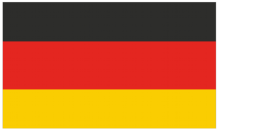
Stop press Germany
Regeneron granted a preliminary injunction by the Munich Court against Formycon in over 20 countries.
The Munich Regional Court has granted Regeneron, and its exclusive licensee Bayer, a cross-border preliminary injunction against Formycon covering 22 European countries. The Court found Formycon infringed Regeneron’s formulation patent covering ophthalmic versions of the intravitreal drug aflibercept under the doctrine of equivalents. The written judgment is expected on 9 October 2025.
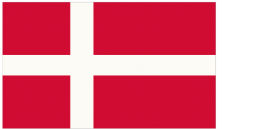
Denmark
Maritime and Commercial Court finds apixaban compound patent valid and infringed in PI proceedings.
On 24 September 2025, the Maritime and Commercial Court handed down its decision in the ongoing dispute between Bristol-Myers Squibb (BMS) and Teva concerning the factor Xa inhibitor apixaban. BMS had sought a temporary injunction, arguing that Teva’s actions infringed BMS’s valid patent DK/EP 1 427 415 (the Patent) and its supplementary protection certificate (SPC), in force until 20 November 2026. Teva opposed the injunction arguing that the Patent (and thus SPC) was not entitled to priority and therefore lacked novelty, was obvious for lack of inventive step as BMS was not entitled to rely on post-filed data, and that the medical use claims were insufficient.
Priority
The parties were in agreement that if priority was lost the Patent lacked novelty over intervening prior art. For harmonisation purposes, the Court held that priority should be determined in accordance with the Enlarged Board of Appeal (EBA) decisions of G1/22 and G2/22. Accordingly, informal and tacit transfers of priority rights must be accepted if there are no specific circumstances giving rise to serious doubts about the entitlement to claim the right. While the priority application and the PCT application for the Patent were filed by different BMS legal entities they were in the same group of companies in which intellectual property rights were managed centrally. Further, there was no indication internally that the BMS entity filing the PCT was not entitled to claim priority, even if this was not manifested in writing until after the application was filed. Therefore, in the absence of specific circumstances otherwise, the Court presumed that the Patent was entitled to priority (and was therefore novel).
Inventive step
Teva did not dispute that the Patent was inventive if post-published data could be taken into account when considering the claimed technical effect. The Court applied the test in G2/21 that post-filed evidence can be relied upon to establish a technical effect if the skilled person would derive the effect as being encompassed by the technical teaching and embodied by the same originally disclosed invention in the application as filed.
The Court indicated that, contrary to the opinion of the validity experts, it considered that the application taught that certain lactam containing compounds, including apixaban, are potential factor Xa inhibitors that can be used for the prevention and treatment of thrombosis. Further, the expert evidence indicated that the skilled person would consider the disclosed lactam containing compounds, including apixaban, would likely fit in the factor Xa binding pockets, and the application as filed disclosed both assays to measure the level of factor Xa inhibition and desired values. The Court therefore considered that apixaban was embodied in the technical teaching of the application as filed. In particular, the Court held that there was no requirement for apixaban to be specifically mentioned as a preferred compound given it fell within the general teaching of the application. The Court went on to find that since Teva had not established the technical effect is not, or cannot be, achieved, it was also embodied under the same invention. Therefore, BMS was entitled to rely on post-filed data in support of an improved technical effect and the Patent was held inventive.
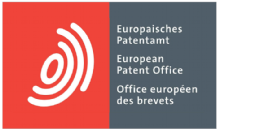
EPO
Enlarged Board of Appeal reaffirms that interveners cannot continue appeal proceedings if the sole or all appeals are withdrawn.
[G 2/24]
The Enlarged Board of Appeal (EBA) was asked to revisit the long-standing rule from G 3/04 – if all appeals are withdrawn during EPO appeal proceedings, can a third party who intervened during the appeal continue with the proceedings?
The reference to the EBA arose from an appeal in opposition proceedings concerning EP 2 941 163, for a skin cleanser device owned by Foreo. Beurer had filed an opposition on grounds of lack of novelty, inventive step, and added matter. On 9 May 2023, the Opposition Division issued an interlocutory decision maintaining the patent in amended form. This decision was appealed by Beurer. On 15 August 2023, Geske (another competitor) sought to intervene in the appeal, relying on Art. 105 EPC. Shortly afterwards, Beurer withdrew its appeal raising the question whether Geske, as intervener, could step into the role of appellant and continue the proceedings.
G 3/04 was decided under EPC 1973, two years prior to EPC 2000 coming into force in December 2007. The EBA carried out a comparative analysis of the relevant provisions of EPC 2000 and EPC 1973 and concluded that nothing in EPC 2000 altered the legal framework since G 3/04. The EBA held that intervention at appeal must fit within the “judicial” nature of appeal proceedings c.f. opposition proceedings. An intervener at appeal becomes a party as of right under Art. 107 EPC, but not an independent appellant. Therefore, an intervenors rights are limited to participation in proceedings that are already pending and not to carrying on the appeal once the original appellant(s) have withdrawn.
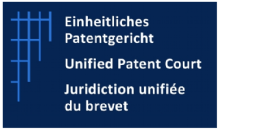
UPC
Court of Appeal admits Apple’s intervention in confidentiality appeal.
[UPC_CoA_747/2025]
On 23 September 2025, the Court of Appeal granted Apple’s application to intervene in Sun Patent Trust’s appeal against a confidentiality order issued by the Paris Local Division (LD).
The underlying dispute concerns two patents asserted by Sun Patent Trust (SPT) against Vivo, claiming – amongst other things – that the terms of a license to the patents at issue that SPT had offered to Vivo were FRAND-compliant. SPT sought to restrict access to the unredacted statement of claim and certain exhibits containing highly confidential information (HCI), including agreements with Apple. Initially, SPT’s request was to limit access to the documents to Vivo’s counsel and, under certain conditions, three Vivo employees. SPT subsequently sought to limit its request for confidentiality under r. 263 RoP to an “External Eyes Only” regime, thereby excluding Vivo employees from access. The Paris Local Division issued an order in line with SPT’s original request, granting access to three Vivo employees in addition to Vivo’s counsel. SPT appealed, requesting an “external eyes only” regime, or in the alternative, that access to three Vivo employees be granted on the basis that they would be barred from participating or advising in certain licensing negotiations for a given period.
Apple supported the appeal, and sought to intervene pursuant to r. 313 RoP, arguing that disclosure of its licensing terms to a competitor would cause commercial harm. Vivo opposed the intervention, claiming Apple lacked a legal interest because the Vivo employees had already accessed the HCI.
The Court of Appeal held that Apple retained a direct and present interest in the appeal outcome. It clarified that, notwithstanding the fact that the HCI had already been disclosed to the Vivo employees, a decision to revoke access would result in the personnel no longer having access and would prohibit them from using the HCI and any further exchanges of confidential information in the ongoing proceedings or for any other purpose.
Apple was granted 15 days to file a Statement in Intervention and was granted permission to participate in the oral hearing. The decision confirms the UPC view that access to confidential information is not a binary state, and that seeking to limit ongoing access to confidential information is a sufficient legal interest to support an application to intervene.
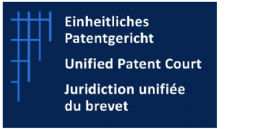
UPC
Düsseldorf LD grants ex parte “saisie” order for trade fair.
[UPC_CFI_885/2025]
On 22 September 2025, the Düsseldorf LD issued an ex parte order under Art. 60 UPCA in respect of a machine being exhibited at the EMO Hannover trade fair. The dispute pertained to alleged infringement of a patent belonging to OTEC Präzisionsfinish GmbH directed to a method of polishing workpieces, with OTEC alleging the high end “DLyte PRO500 Automated Cell” electropolishing machine sold by defendant Stereos infringed its patent. The patent in question was already the subject of ongoing infringement and invalidity proceedings before the UPC in respect of a different machine produced by Stereos. In respect of the DLyte PRO500, OTEC argued that the trade fair was its only viable opportunity to gather evidence due to the high cost of this particular machine and the closed channels through which it was distributed. OTEC requested the opportunity to inspect and measure the operation of the machine at the fair, or in the alternative, to seize one of the machines and associated documentation for inspection. The request was made on an ex parte basis, with OTEC alleging a serious risk that the machine could be removed from the exhibition grounds or altered via software update at short notice.
The Order was granted under Art. 60 UPCA, and on-site inspection and measurement of the machine’s operation by an expert (a patent attorney) and bailiff was ordered. The applicant’s own lawyer and patent attorney were permitted to be present during the inspection. The Court held the application admissible, urgent, and sufficiently substantiated. It held that a detailed validity assessment was not required at this stage in spite of the fact that the patent was the subject of an invalidity counterclaim at the UPC, with the court reasoning that there was no “clear indication” that would cast doubt on validity, such as an extant negative decision. The Court also accepted OTEC’s view that there was a risk of evidence loss that justified the ex parte nature of the order.
The Court also permitted seizure of the machine in the event inspection proved impossible and imposed strict confidentiality obligations on all participants. In recognition of Stereos’s interest in protecting their trade secrets, the expert, bailiff and the applicant’s representatives were placed under a duty of confidentiality and the expert’s report was only to be disclosed to OTEC after Stereos was given an opportunity to be heard on the subject of its confidentiality interests and further consideration by the court. Stereos was ordered to cooperate and penalties were set for non-compliance.
The decision illustrates the use of the UPC’s robust “saisie-style” ex parte evidence preservation tools in the classic setting of a trade fair, and demonstrates its readiness to act swiftly when infringement is suspected but access to products is limited. It also confirms the Court’s commitment to balancing enforcement needs with protection of trade secrets.

/Passle/5f3d6e345354880e28b1fb63/MediaLibrary/Images/2025-09-29-13-48-10-128-68da8e1af6347a2c4b96de4e.png)
/Passle/5f3d6e345354880e28b1fb63/SearchServiceImages/2025-12-04-17-39-35-407-6931c757987ca2e5ace54415.jpg)
/Passle/5f3d6e345354880e28b1fb63/SearchServiceImages/2025-12-04-15-30-03-022-6931a8fb6964f693a3233ec6.jpg)
/Passle/5f3d6e345354880e28b1fb63/SearchServiceImages/2025-12-02-15-57-05-627-692f0c51cb7c9dfade93b1f8.jpg)